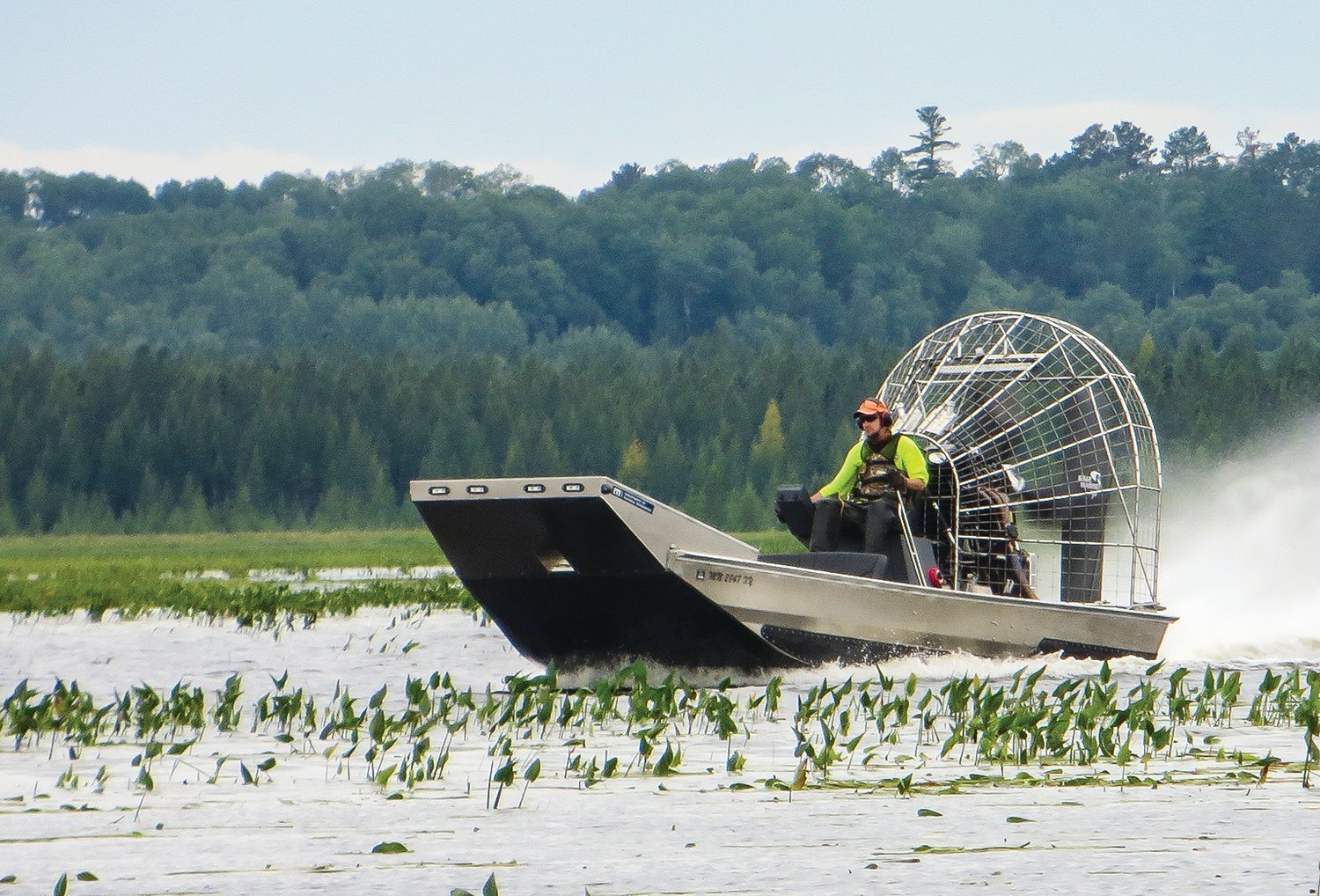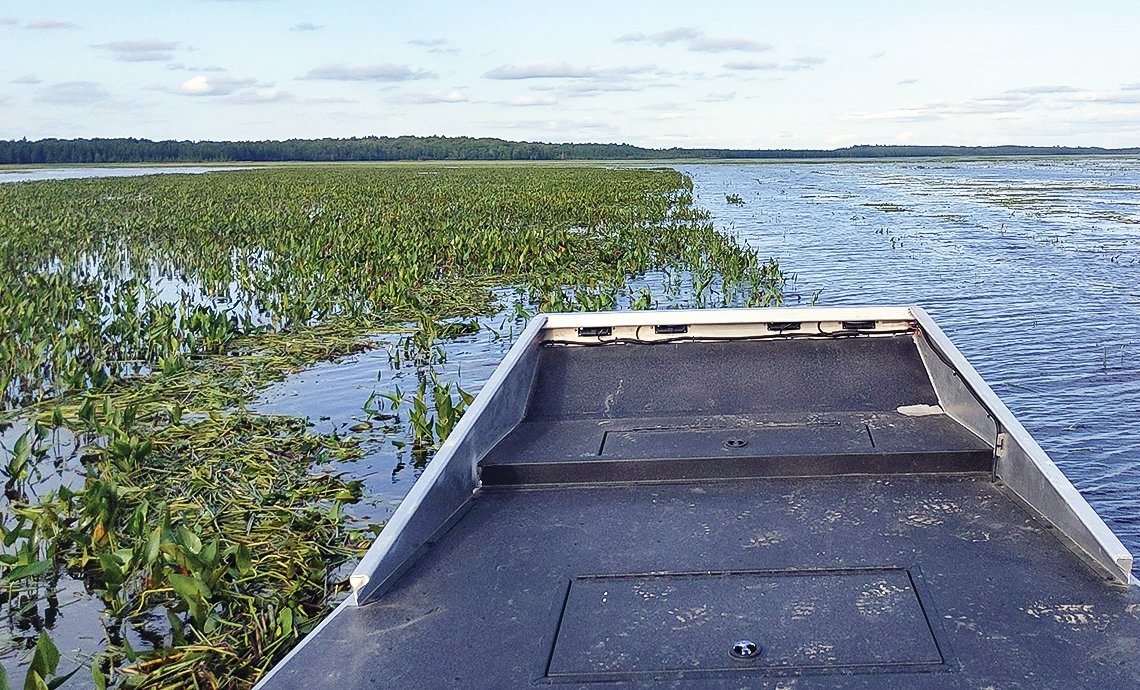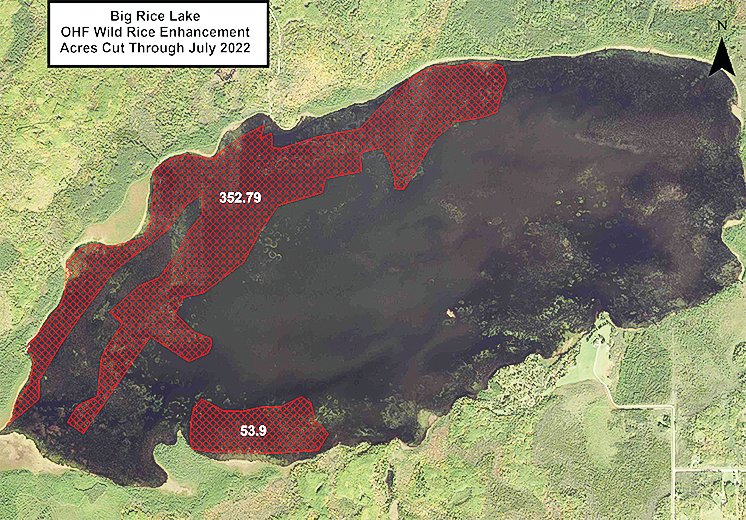Support the Timberjay by making a donation.
Big hopes for Big Rice
Wild rice project making progress this year in wake of COVID, drought challenges
BIG RICE LAKE— For much of this summer, the roar of an airboat engine has regularly broken the sounds of nature that normally dominate the shores of this remarkable lake, tucked away in the …
This item is available in full to subscribers.
Attention subscribers
To continue reading, you will need to either log in to your subscriber account, or purchase a new subscription.
If you are a current print subscriber, you can set up a free website account and connect your subscription to it by clicking here.
If you are a digital subscriber with an active, online-only subscription then you already have an account here. Just reset your password if you've not yet logged in to your account on this new site.
Otherwise, click here to view your options for subscribing.
Please log in to continue |
Big hopes for Big Rice
Wild rice project making progress this year in wake of COVID, drought challenges
BIG RICE LAKE— For much of this summer, the roar of an airboat engine has regularly broken the sounds of nature that normally dominate the shores of this remarkable lake, tucked away in the Superior National Forest about 12 miles north of Virginia. It’s been the most productive season yet in a multi-year effort to return this 2,000-acre water body to its former status as one of the state’s premier lakes for wild rice.
It’s been three years since the state’s Outdoor Heritage Fund agreed to dedicate $845,000 to the restoration effort but planned work has been delayed the past two years, first due to COVID-19, and, last year, due to the extreme drought, which made parts of the lake inaccessible even to airboats.
The airboat and the roving DNR crews that man the machine have been waging a battle with pickerel weed, a native, aquatic plant known for its somewhat showy purple flowers, emergent heart-shaped leaves, and its propensity for forming thick mats of rhizomes and vegetation that effectively block other plants, like wild rice, from growing.
In many of the shallow lakes where wild rice grows, the competition between wild rice and pickerel weed has gone on for generations. In recent years, however, perhaps due in part to climate change, aquatic plants like pickerel weed and water lilies, have seemed to gain the upper hand on many lakes, including Big Rice.
The Department of Natural Resources, which controls the public waters even on lakes in the national forest, has taken on the mission of restoring the lake, in part because the agency acknowledges it played a role in the decline of rice here.
For years, beavers essentially controlled the lake level on Big Rice, and the natural fluctuations that caused provided variable wild rice crops on Big Rice. In a good year, the lake looked like a wheat field from the shore and would attract hundreds of ricers as well as tens of thousands of ducks, geese, and other waterfowl.
In 1995, DNR officials decided they could provide more reliable rice crops on the lake by getting rid of the beavers, installing a water control weir at the lake’s outlet, and maintaining lower and more stable water levels. For the first year or two, the strategy appeared to work, but the stable water levels eventually gave pickerel weed the competitive edge and wild rice crops declined quickly and sharply.
Melissa Thompson, who is now the DNR’s shallow lakes specialist based in Tower, is overseeing the restoration effort. She acknowledges that some members of the public at the time had predicted the DNR’s management plan could unleash the pickerel weed. But lower water levels had seemed to help some other wild rice lakes in the state, so the DNR persisted— and learned a lesson the hard way.
“It turns out, some instability actually benefits rice,” said Thompson.
Now, they’re trying to tilt the balance back in favor of wild rice, using the airboat and attached cutting blades, purchased through the grant funds, to essentially mow the large patches of pickerel weed that have come to dominate parts of the lake that once held wild rice. Using methods pioneered by the Fond du Lac Band, Thompson said the DNR has learned that by mowing the emergent pickerel a foot or two underwater at least twice a year, they can set it back enough to give wild rice a fighting chance. Sediment core samples taken on the lake show there’s still rice seed in the sediment and research from other lakes suggests that seed can remain viable for as long as 20 years. In other words, if the DNR can set the stage, the rice should come back.
With help from Fond du Lac, the DNR initially tested the method on Big Rice using several plots. Thompson said the rice showed it could recover, which led to the plan to seek big-time money for a major restoration effort.
Some of those funds went initially to rebuild the public access on the north side of Big Rice. The lake there was too shallow to accommodate the large airboat and a barrier of larger rocks a bit further offshore proved another impediment. So, the DNR excavated a new channel to provide better access.
In 2020, the DNR had planned to hire a seasonal crew, based in Tower, to operate the airboat but COVID put a temporary hold on that plan. In 2021, the agency used a roving seasonal crew to operate the airboat, but as water levels dropped precipitously throughout the summer, the work had to be suspended.
This year, both COVID and Mother Nature have been more cooperative and the battle against pickerel weed has resumed in earnest, as the airboat has been out on the lake most weekdays for the past couple months. Last year, the airboat crew was able to mow about 400 acres twice, before the low water halted the work. This year, as of the first week of August, Thompson said the airboat has already mowed about 400 acres, with about a month remaining in the cutting season.
“We just want to cut as much as we can, now,” said Thompson.
So far, the mowing has been focused on the lake’s north and west side where the pickerel weed is the thickest.
It’s been an especially expensive effort this summer. Thompson said the airboat can consume 80 gallons of gas in a full day, and with current gas prices, that adds up quickly. Even so, she said she doesn’t expect to expend all the grant funds when they expire at the end of the 2024 fiscal year. That’s because COVID prevented much of the hiring Thompson had anticipated for the work, and the crews working the airboat this year are being funded by another pot of money unrelated to the grant.
In addition to mowing the pickerel weed, Thompson said the DNR hopes to utilize a harvester barge from the Fond du Lac to dig out some of the thicker mats of pickerel weed roots and rhizomes. The DNR also bought a much smaller “mudboat” and motor, with a front-mounted cutting attachment that crews can use on the thicker mats.
In addition to the work on pickerel weed, Thompson said the DNR also plans to remove the rock weir that agency officials installed in 1995 and allow the lake level to fluctuate naturally, as it did in the past. Thompson said that work should be completed in late fall this year or spring of next year.
The DNR is also considering trying to till the sediments in some parts of the lake in order to bring old rice seed closer to the surface, in an effort to encourage its germination.
The grant budget also includes funds to purchase wild rice seed from elsewhere, but Thompson said the agency will try to avoid doing that if possible. Wild rice varies remarkably from lake to lake and Big Rice was well known for the high quality of its rice kernels, which were exceptionally long and thick enough to avoid splitting during processing. Importing seed from other lakes could impact that quality, once again disappointing ricers. Thompson said the sediment cores taken on the lake suggest there’s enough seed remaining for a recovery, so for now it appears any plan to use rice seed from elsewhere is on hold.
Future in question
While the DNR is optimistic about the prospects for restoring the rice crop on Big Rice, Thompson acknowledges that managing for this iconic Minnesota crop is likely to be more challenging as time goes by, and that even once recovered, Big Rice is likely to require ongoing maintenance to keep pickerel weed at bay.
“We’ve seen pickerel weed exploding in other lakes as well,” she said. “It’s likely climate change related.” As Minnesota’s climate continues to warm, its most famous wild grain could easily vanish into history. At least for now, Thompson said the agency remains focused on its current goal. “The bigger picture is we just want to bring the rice back,” she said.











